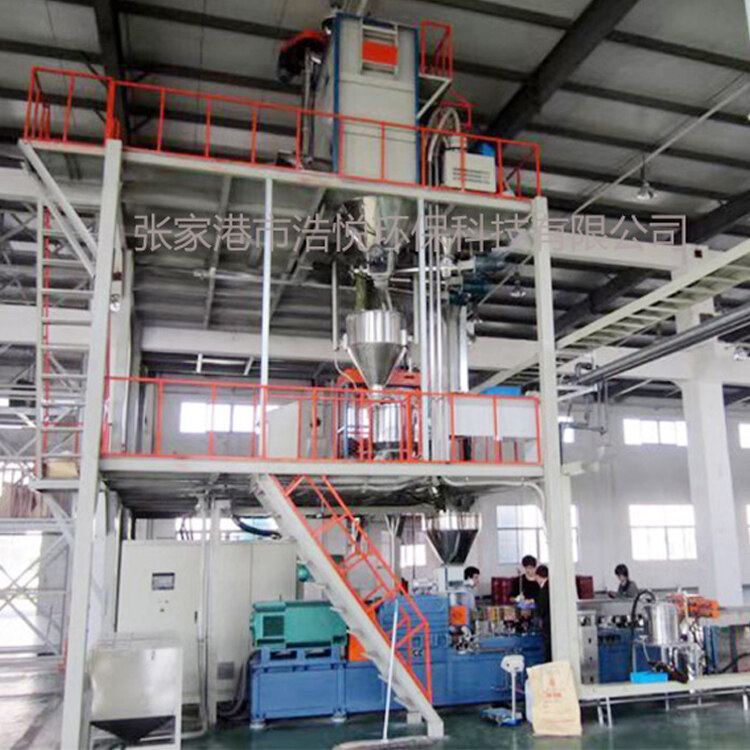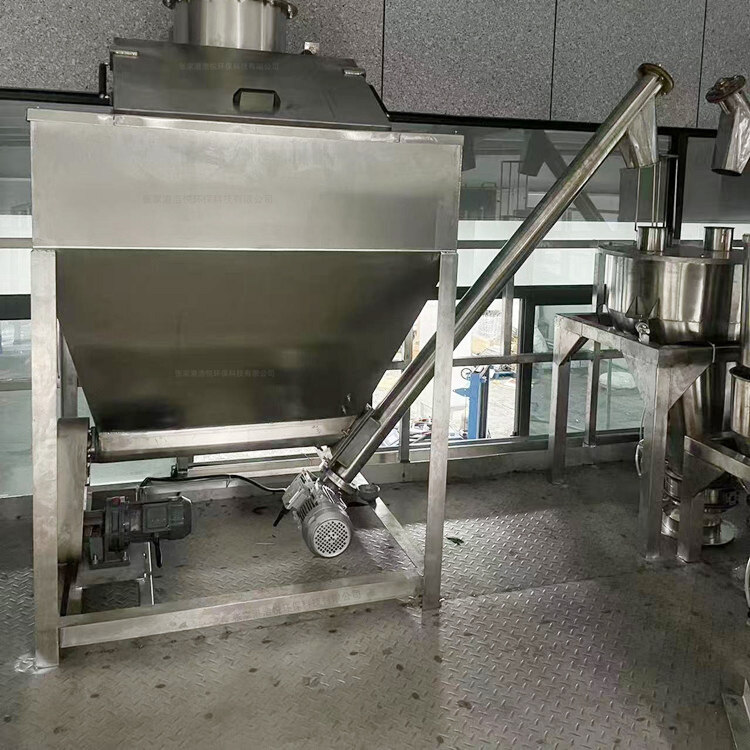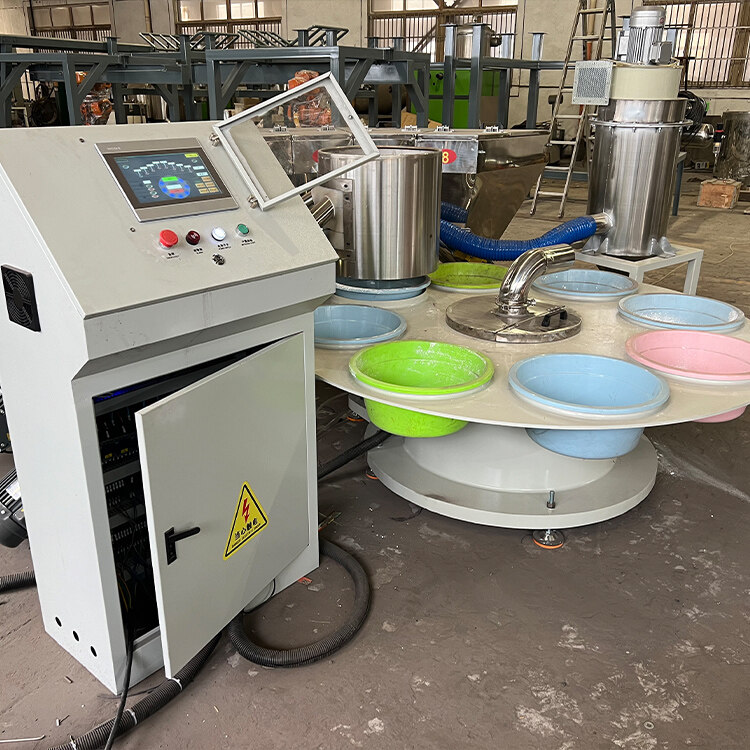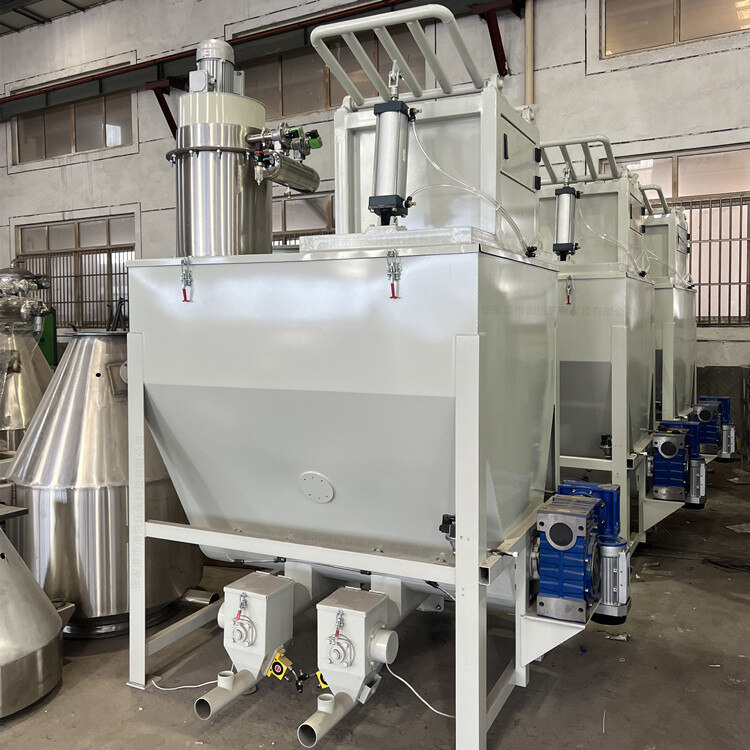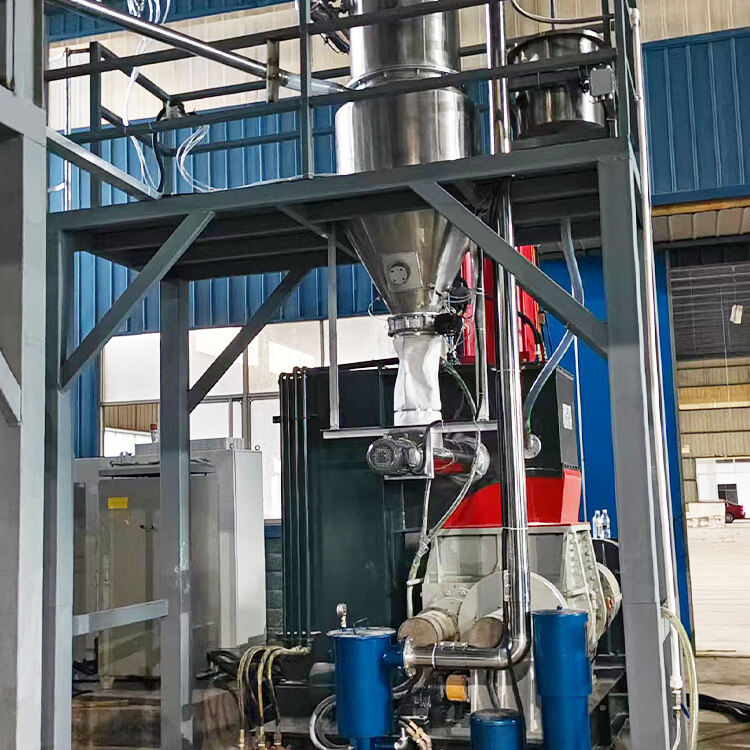- Introduction to automatic batching machine and fully automatic batching machine equipment
- The powder metering system tells you about the introduction of the mixing and drying machine
- 1000kg vacuum feeding machine
- Fully automatic small material batching system
- Research on Innovation of Automatic Weighing Machine Technology
- Design and operation of automatic batching system using PLC, industrial computer and frequency converter
Automatic weighing machine packaging machine
- Category:Automatic measuring packaging machine
- Hits:132次
- Release Date:2025-06-30
- Share:
- Inquiry
- Details
In the process of industrial production moving towards automation and intelligence, automatic weighing machines and packaging machines have become important equipment for many manufacturing enterprises to improve production efficiency and ensure product quality, thanks to their characteristics of integrating precise measurement and efficient packaging. It can automatically complete a series of operations such as weighing, packaging, and sealing of materials based on preset weight, and is widely used in multiple industries such as food, chemical, pharmaceutical, and hardware. The following will provide a comprehensive and in-depth introduction to the automatic weighing machine packaging machine from the aspects of equipment structure, working principle, core advantages, application scenarios, and development trends.
1、 Core structure composition of equipment
The automatic weighing machine packaging machine is mainly composed of five core modules: weighing system, packaging system, conveying system, control system, and frame. Each part is closely coordinated to form a complete automated production system.
(1) Weighing system
The weighing system is the key to achieving accurate measurement in automatic weighing machine packaging machines, consisting of weighing sensors, weighing platforms, signal processing modules, and weighing buckets. High precision weighing sensors are the core components of weighing systems, usually using strain gauges or electromagnetic force balance sensors, with an accuracy of ± 0.1% - ± 0.5%. They can sensitively sense small changes in material weight and convert weight signals into electrical signals for output. The weighing platform is used to carry weighing buckets and materials, and its structural design needs to have good rigidity and stability to ensure that the weighing process is not affected by external vibrations, impacts, and other factors. The signal processing module amplifies, filters, and performs analog-to-digital conversion on the weak electrical signal output by the weight sensor to improve the stability and accuracy of the signal, and then transmits the processed data to the control system. The weighing bucket is used for temporary storage of materials, and its capacity is designed according to the packaging specifications and material characteristics. The interior of the bucket is smooth, making it easy to unload materials smoothly.
(2) Packaging system
The packaging system is responsible for completing the packaging and sealing work of materials, mainly including packaging film supply device, shaper, heat sealing device, and cutting device. The packaging film supply device is driven by a motor to rotate the reel and release the packaging film according to the set length. The molding machine is used to fold packaging film into specific shapes, commonly including three side sealing, four side sealing, back sealing, etc., to meet the packaging needs of different products. The heat sealing device uses heating elements to heat the packaging film to a molten state, and then compresses the edges of the film through a pressure roller to achieve sealing. The parameters such as heat sealing temperature, pressure, and time can be adjusted according to the packaging film material to ensure a firm and aesthetically pleasing seal. After the packaging is completed, the cutting device cuts the packaging film to form independent packaging bags.
(3) Conveyor system
The conveying system is used for the transportation of materials and packaging bags, including feeding conveyor belts, weighing conveyor belts, and discharging conveyor belts. The feeding conveyor belt transports materials from the storage bin to above the weighing hopper, and its operating speed can be adjusted according to the material flow rate. The weighing conveyor belt is located below the weighing hopper, used to carry the weighed materials and transport them to the packaging station. The discharge conveyor belt transports the packaged finished products to the subsequent process or finished product storage area. Photoelectric sensors are usually installed on conveyor belts to detect the position of materials and packaging bags, ensuring accurate connection between each link.
(4) Control system
The control system is based on PLC (Programmable Logic Controller) or industrial computer as the core, combined with touch screen human-machine interaction interface (HMI). The operator inputs parameters such as packaging weight, packaging speed, and packaging form through HMI. During the operation of the system, real-time weight data feedback from the weighing system and position signals detected by various sensors are collected and compared with preset values. When the actual weight deviates from the set value, the control system automatically adjusts the feeding speed; When the position of the packaging bag is detected to be inaccurate, the conveying speed is automatically corrected. In addition, the control system also has functions such as fault diagnosis, alarm prompts, data recording, and storage. When the equipment malfunctions, such as abnormal weighing sensors, high heat sealing temperatures, or blocked conveyor belts, the system will immediately sound and light an alarm and record the fault information, making it convenient for maintenance personnel to quickly locate and solve the problem. At the same time, production reports can be generated to record information such as packaging quantity, weight qualification rate, equipment operating time, etc., providing a basis for production management and quality control.
(5) Rack
A rack is a frame structure that supports the entire equipment, generally made of high-strength steel welded or bolted together, with sufficient strength and rigidity to withstand the vibrations and loads generated during equipment operation. The design of the rack needs to consider equipment installation space, maintenance convenience, and integration with upstream and downstream equipment to ensure stable operation and ease of operation and maintenance of the automatic weighing machine packaging machine.
2、 Working principle
The workflow of an automatic weighing machine packaging machine mainly includes three stages: weighing, packaging, and conveying. After the equipment is started, the material is conveyed to the top of the weighing hopper through the feeding conveyor belt, and the feeding speed is adjusted by the control system based on the weight data feedback from the weighing sensor. When the weight of the material in the weighing hopper reaches the set value, the feeding conveyor belt stops running and the weighing process is completed.
Subsequently, the weighing conveyor belt transports the materials inside the weighing hopper to the packaging station. At this point, the packaging film supply device releases a certain length of packaging film, which is folded into the desired shape by the former and wrapped around the material. The heat sealing device heats and pressurizes the edges of the packaging film to achieve sealing, and then the cutting device cuts the packaging film to form a complete packaging bag.
Finally, the discharge conveyor belt transports the packaged finished products to the designated location, completing one packaging process. The entire process is automatically carried out under the coordination of the control system, with each link closely cooperating to ensure the accuracy and efficiency of the packaging.
3、 Core technological advantages
(1) High precision weighing and measurement
By using advanced weighing sensors and precise control algorithms, the automatic weighing machine packaging machine can achieve high-precision material measurement with errors controlled within a very small range. In scenarios such as candy and nut packaging in the food industry and additive packaging in the chemical industry that require high precision, it can effectively ensure the consistency of product weight and meet the strict requirements of the market for product quality.
(2) Efficient Automated Homework
The entire process from material weighing, packaging to sealing is automated, greatly reducing manual intervention and improving production efficiency. Compared to traditional manual packaging, its packaging speed can be increased by 3-5 times, which can meet the needs of large-scale production. At the same time, automated operations also reduce labor intensity, minimize human errors, and improve production stability and reliability.
(3) Flexible packaging adaptability
Supports multiple packaging specifications and forms, and can quickly adjust packaging weight, bag size, and sealing method according to product requirements. Whether it is small dose drug packaging or large specification industrial product packaging, it can be achieved through simple parameter settings and mechanical adjustments. In addition, it can also be adapted to packaging films of different materials, such as polyethylene (PE), polypropylene (PP), composite films, etc., to meet diverse packaging needs.
(4) Intelligent management and convenient operation
Equipped with an intelligent control system, operators only need to input relevant parameters on the human-machine interface, and the equipment can automatically operate with simple and easy to understand operation. At the same time, the system supports remote monitoring and data transmission. Management personnel can view the real-time operation status of equipment and production data through the network, perform remote fault diagnosis and parameter adjustment, and achieve intelligent production management.
4、 Application scenarios
(1) Food industry
In the field of food processing and packaging, automatic weighing machine packaging machines are widely used for packaging leisure food, dry goods, seasonings, frozen food, etc. For example, in the packaging of snack foods such as potato chips and cookies, the weight of each bag can be precisely controlled to ensure consistency in product quality and taste; In the packaging of grains such as rice and flour, large-scale packaging can be achieved to improve packaging efficiency.
(2) Chemical industry
Used for packaging of chemical raw materials, additives, fertilizers and other products. In the packaging of pesticides, coatings and other products, it is possible to ensure the accuracy of the weight of each bag of product, prevent product quality problems and safety hazards caused by weight deviation. Meanwhile, the fully sealed packaging process can effectively prevent chemical material leakage and ensure the safety of the production environment.
(3) Pharmaceutical industry
In the process of drug production and packaging, there are extremely high requirements for measurement accuracy and hygiene. The automatic weighing machine packaging machine can be used for packaging drugs such as tablets, capsules, granules, etc., meeting the requirements of GMP (Good Manufacturing Practice), ensuring accurate drug dosage, good packaging sealing, and guaranteeing drug quality and safety.
(4) Hardware and daily necessities industry
In the packaging of hardware accessories such as screws, nuts, nails, as well as daily necessities such as tissues, laundry detergent, shampoo, etc., automatic weighing machine packaging machines can achieve fast and accurate packaging, improve production efficiency, and reduce production costs. Meanwhile, beautiful and neat packaging also helps to enhance the market competitiveness of the product.
5、 Development Trends
In the future, automatic weighing machine packaging machines will develop towards higher precision, intelligence, high speed, and green direction. In terms of precision improvement, by developing new sensors and optimizing control algorithms, measurement errors can be further reduced to meet the packaging precision requirements of high-end products; In terms of intelligence, the introduction of artificial intelligence and machine vision technology enables devices to have self-learning, self diagnosis, and adaptive capabilities, and can automatically identify product specifications and adjust packaging parameters; In terms of high-speed production, continuously optimizing mechanical structures and control systems, improving packaging speed, and meeting the higher efficiency requirements of large-scale production; Greenization is reflected in the use of environmentally friendly packaging materials, optimization of packaging processes to reduce material waste, and reduction of equipment energy consumption, promoting sustainable development of the industry.


